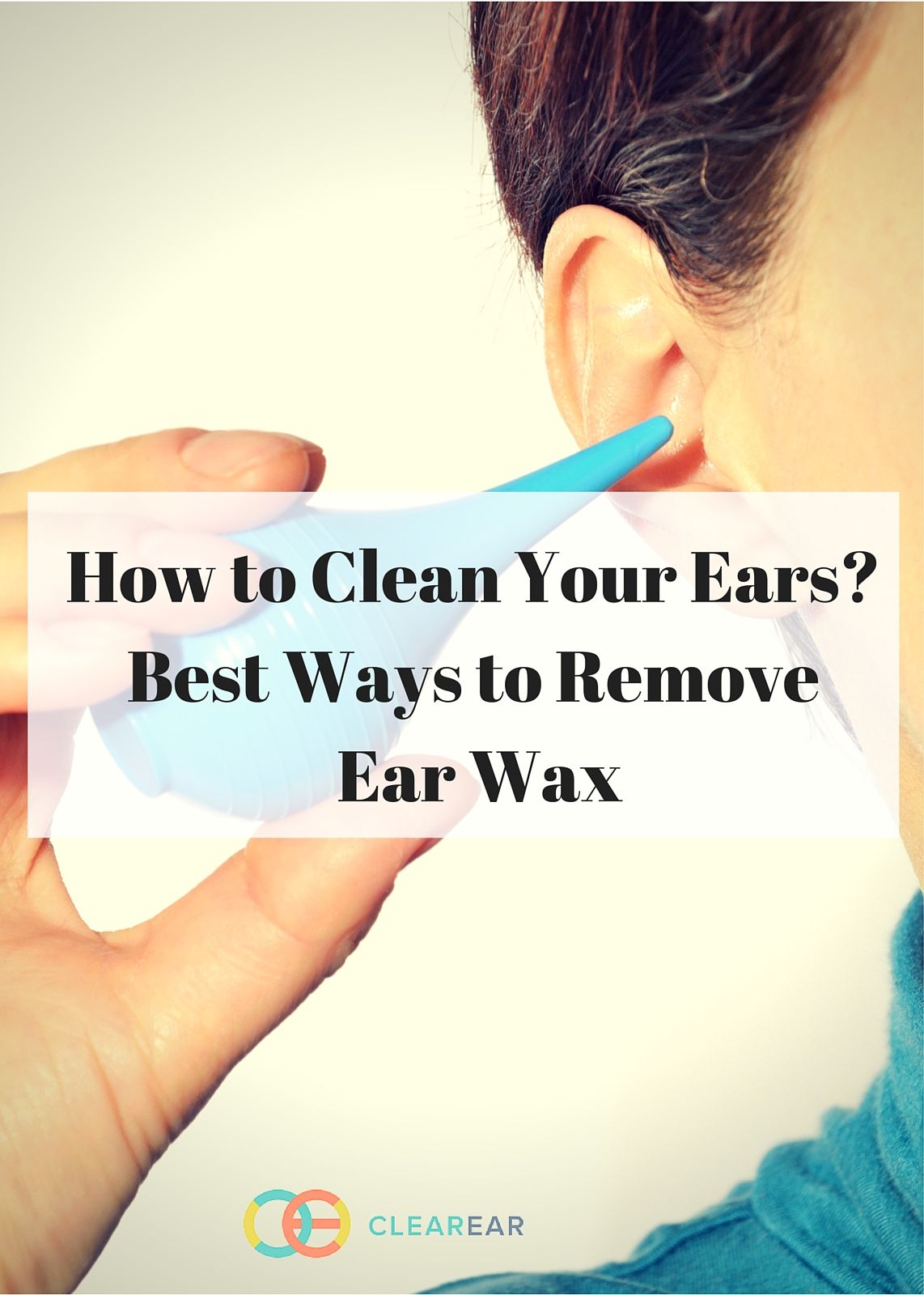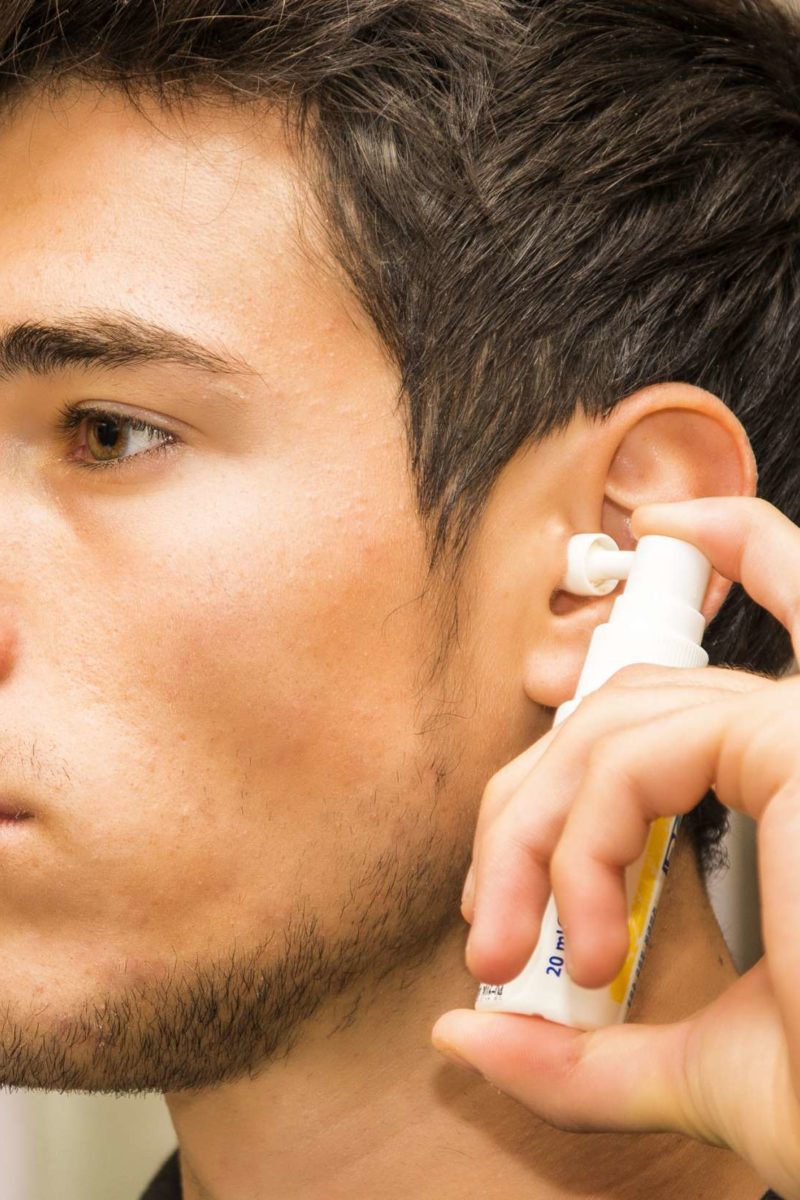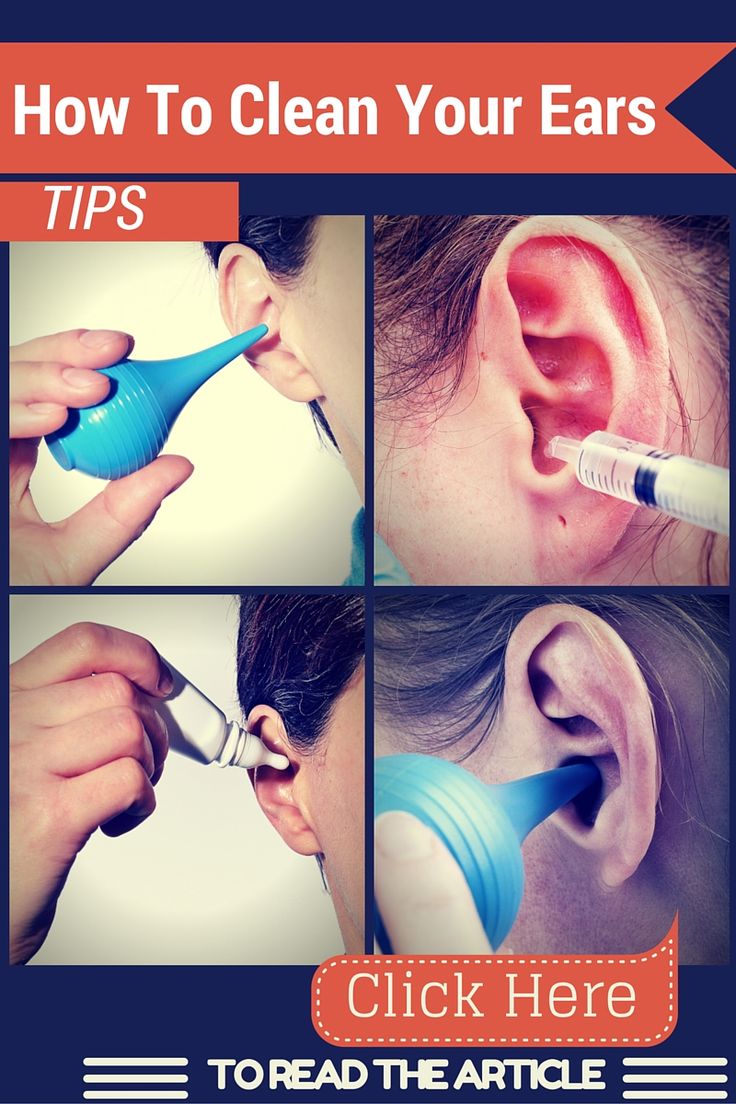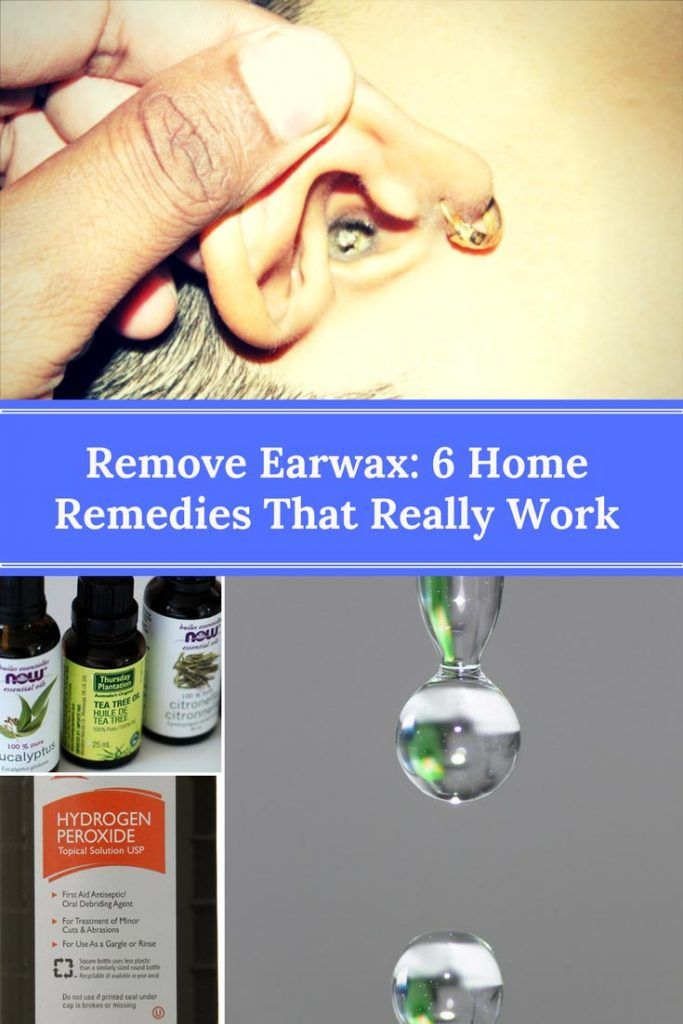Ways To Properly Clean Your Ears
Ideally, the safest way to eliminate earwax buildup is by visiting your doctor. During the removal process, your doctor might use tools such as a suction device, a cerumen spoon, and forceps to get rid of the blockage.
If you wish to clean your ears at home, follow these tips for a safe ear cleaning process:
Talk To Your Hearing Care Professional
A hearing healthcare professional can also engage in manual earwax removal, if you find at-home remedies still dont solve your earwax issues. Make an appointment with your hearing healthcare professional if all at-home remedies fail or you experience excess amounts of earwax, despite constant upkeep.
Remember, earwax is natural and is protective, lubricating and has antibacterial properties in normal amounts. However, too much earwax can cause issues for those who wear hearing aids.
How To Protect Your Ears
Beyond keeping your ears clean, follow these tips to protect them and ensure good hearing for years to come:
- Dont insert small objects into your ears. You shouldnt put anything smaller than your elbow inside of your ear canal because it can cause injury to your eardrum or wax impaction.
- Limit your exposure to loud noises. Wear protective headgear or earplugs when the noise gets too loud.
- Take periodic breaks from using your headphones, and keep the volume low enough that no one else can hear your music. Dont raise the volume in your cars sound system up too high either.
- Dry out your ears after swimming to prevent swimmers ear. Use a cloth to wipe the outside of the ear, and tilt your head to help remove any additional water.
- Pay attention to any hearing changes that occur with the use of certain medications. If you notice changes, balance issues, or ringing in your ears, contact your doctor.
- See your doctor as soon as possible if you notice sudden pain, a loss of hearing, or if you have an ear injury.
Read Also: How To Treat Ear Infection During Pregnancy
Why Your Ears Make Wax
The reason we feel tempted to clean our ears is because of that substance called cerumen, commonly called earwax. Itâs normal for your body to produce it, and it actually helps protect and lubricate your ears. If you didnât have earwax, your ears would probably be itchy and dry.
It even has antibacterial properties, which means your ears are self-cleaning. Earwax is like a filter for your ears, keeping out harmful things like dirt and dust, and trapping them so they donât go deep inside.
When you chew and move your jaw, you help move old earwax out of the ear canal to the ear opening. Thatâs where it usually dries up and falls out. But earwax isnât formed in the deep part of your ear canal; itâs made in the outer section.
So, the only reason youâd have an earwax blockage up against your eardrum, is because you tried to clean your ears with a cotton swab — or something like it — and pushed the wax in deeper.
Swabbing or sticking pointy objects inside your ear can cause other serious problems:
- Infection
- Significant hearing loss
How To Irrigate Your Ears

To irrigate your ears, use a syringe containing clean water at room temperature. Ear irrigation kits are available online and in retail stores. If you choose not to purchase a kit, you can make your own with a 20 to 30-millimeter syringe. Please make sure that the catheter at the end of the syringe is blunt to minimize the risk of damage to the ear. To irrigate your ears, try the following:
- Wash hands before you begin cleaning.
- Sit upright and place a towel on the shoulder to collect water draining from the ear.
- Using a finger, softly pull ear upward and backward, allowing water to enter the ear.
- Insert the syringe up and toward the back of the ear, which helps the earwax separate from the ear and drain.
- Lightly press the syringe to permit water to enter the ear. If pain or pressure is present, stop the irrigation.
- Finally, dry the ear with a cloth or administer a couple of drops of rubbing alcohol into the ear.
Recommended Reading: How To Pair Compilot With Hearing Aids
How To Clean Your Airpods Airpods Pro Airpods Max And Earpods
Learn how to clean your AirPods, AirPods Pro, AirPods Max, and EarPods.
Is it OK to use a disinfectant on my AirPods, AirPods Pro, AirPods Max, or EarPods?Using a 70 percent isopropyl alcohol wipe, 75 percent ethyl alcohol wipe, or Clorox Disinfecting Wipes, you may gently wipe the exterior surfaces of your AirPods, AirPods Pro, AirPods Max, or EarPods. Dont use on the speaker mesh of your AirPods, AirPods Pro, and EarPods. Dont use on the knit mesh canopy and ear cushions of your AirPods Max. Don’t use products containing bleach or hydrogen peroxide. Avoid getting moisture in any openings, and dont submerge your AirPods, AirPods Pro, AirPods Max, or EarPods in any cleaning agents.
Dos And Donts For Ear Irrigation
While most people dont think twice about using cotton swabs to clean their ears, they may actually be causing more harm than good. By pushing small objects such as swabs, bobby pins, keys, or other items into the ear, it has the potential to make any wax present move deeper into the ear canal. This can cause a blockage that could set you up for all types of problems.
From dizziness and coughing to ear pain and reduced hearing, there are multiple symptoms that can signify a blockage of earwax has occurred. Other symptoms include the sensation of fullness or ringing in the ear. Not everyone is prone to waxy buildup, but some people have the tendency to suffer from it more often.
One of the most frequent reasons doctors see patients for their ears, this impacted wax can cause problems for people of any age. Often affecting regular users of earbuds or ear plugs, its actually quite easy to fall victim to this ailment. People who work in loud environments and use the sponge style ear plugs which get inserted into the ear can be affected by waxy buildup as well.
In order to remove this uncomfortable buildup, both over the counter and doctor administered ear irrigation solutions are available, though its not always recommended. Unless excessive ear wax is confirmed as the culprit, its best to see a doctor before attempting ear irrigation on your own.
In order to treat this condition here are some tips:
Don’t Miss: Why Are My Ears Ringing All The Time
Clean Your Airpods And Airpods Pro
- Dont run AirPods or AirPods Pro under water.
- Use a soft, dry, lint-free cloth.
- If your AirPods or AirPods Pro are exposed to anything that might cause stains or other damagefor example, soaps, shampoos, conditioners, lotions, perfumes, solvents, detergent, acids or acidic foods, insect repellent, sunscreen, oil, or hair dye:
- Wipe them clean with a cloth slightly dampened with fresh water and dry with a soft, dry, lint-free cloth.
- Allow them to completely dry before placing in the charging case.
- Do not attempt to use them until they’re completely dry.
Scrape Out That Waxy Buildup And Listen Up Weve Put Together Some Tips On How To Clean Dog Ears
Have you ever suddenly noticed that your dog isnt responding to commands and worry that the pup might be going deaf until crumbly buildup starts tumbling out of their ears? If not, consider yourself lucky. Its not pretty. Thankfully, its also not universal. Not all dogs need to have their ears cleaned. But others, especially those with floppy ears, need it done on a regular basis. Is your dog one of those who needs it regularly, and if so, how can you be sure youre doing it properly? Now is when youll want to be all ears because weve got the information you need to know about when and how to clean your dogs ears. So keep your eyes glued to this page and scroll away because everything that you need to know about clearing out canine ears is about to be revealed.
Recommended Reading: How Long Will Ringing In Ears Last
Use A Saline Solution
Sometimes a little bit of salinity in the water helps to remove earwax. Its best to make your own solution instead of the bottled saline. Completely dissolve a teaspoon of salt in a half-cup of warm water. Soak a cotton ball in the saline solution, tilt your head and then use the saturated cotton to drip the salt water into your ear. Allow the water to stay in your ear for a few minutes, then tilt in the opposite direction to drain out the saline. Do this for each ear.
Ears Usually Clean Themselves
Your ears usually do a good job cleaning themselves and dont need any extra care.
The ear actually has its own self-cleaning system. We have this misunderstanding that wax is a hygiene problem, but earwax is magical, Dr. Johnson says. Earwax is secreted from glands in the skin, lubricates the ear, and like a conveyor belt, the wax captures dirt and bacteria from the entrance of your ear canal and slides out on its own.
Earwax, technically called cerumen, is only a problem if it affects your hearing or water gets trapped behind the wax, Dr. Johnson says. For most of the population, Id rather you just leave your ears alone to clean themselves.
Recommended Reading: Can Tinnitus Be In One Ear Only
Home Remedies: Cleaning Out The Earwax
Earwax is a helpful and natural part of your body’s defenses. It cleans, lubricates and protects your ear canal by trapping dirt and slowing the growth of bacteria. Earwax blockages commonly occur when people try to clean their ears on their own by placing cotton swabs or other items in their ears. This often just pushes wax deeper into the ear, which can cause serious damage to the lining of your ear canal or eardrum.
Never attempt to dig out excessive or hardened earwax with available items, such as a paper clip, a cotton swab or a hairpin.
If earwax blockage becomes a problem, you or your doctor can take simple steps to remove the wax safely.
The Proper Way To Clean Your Ears

Part of proper hearing aid maintenance is proper ear hygiene. A hearing aid can easily become dislodged if too much wax builds up in the ear. When build up occurs, the sound produced by the hearing aid can come across intermittent or rife with static. Just like hearing aids are delicate, so too are your ears; both require special care and attention during cleaning. The most important rule to abide by when cleaning your ears is to avoid inserting anything into the ear, such as a cotton-tipped swab or applicator. Doing so poses the risk of pushing wax deeper into the ear canal, worsening any hearing issues. It also puts you at risk of rupturing an ear canal or drum.
Don’t Miss: Why Does It Sound Like Water Is In My Ear
A Hearing Professional Can Always Help
The smart recommendation for anyone concerned about earwax is to consult with a hearing professional. Its important to note that people who have diabetes, who are prone to ear infections, who might have a perforation in the eardrum, who have tubes, or who have compromised immune systems should exercise additional caution and consult with a professional before trying any treatment at home.
Not sure where to find a hearing professional? We can help. or and well connect you with a trusted hearing healthcare provider near you.
There Are More Than A Few Things To Avoid When Cleaning Your Ears
The overarching rule here is to leave your ears alone except for the gentlest cleaning of the exterior parts, but the list below goes into specifics about the things you should avoid. TL;DR? Dont stick anything in your ear without consulting your provider first.
Did you know that cotton swab packages often have a warning that explicitly tells you not to use them in your ears? Using them to remove earwax actually pushes wax farther into your ear, the Mayo Clinic explains. Additionally, cotton can cause tiny cuts or microabrasions in your ear, which can increase your chances of getting an ear infection, Dr. Voigt says. This is actually the opposite of what youre looking for when you set out to remove wax from your ears.
So what should you do with all those cotton swabs? A cotton swab can be used to go into the little folds of the ears, Dr. Voigt says. People also use those cotton tip applicators to apply makeup or to clean other areas of their face. But they should not be stuck into . This rule doesnt just apply to cotton swabs: Many experts say you shouldnt put anything smaller than an elbow into your ears. Yes, you read that right: an elbow.
Also Check: How To Learn Sign Language Words
How To Clean Dog Ears In 3 Easy Steps
Warm Water And A Washcloth
For most people, this simple method removes all excess earwax. Our ears are actually self-cleaning. Earwax migrates from the eardrum to the outer ear, taking dirt and debris with it. When you try to stick something inside the ear canal, youre actually pushing earwax back toward your eardrum, possibly creating a problem. Thats why its best to let nature do its thing and allow your earwax to move out to the outer ear. Take a wet washcloth and wipe the wax from your outer ear. If you need a little more help to move the earwax, you can tip your head to one side and squeeze warm water from the washcloth into your ear canal. Let it sit for a while, then tilt your head in the opposite direction. Do this for both ears.
Also Check: How Do You Stop A Ringing Noise In Your Ear
Should You Use Cotton Swabs To Clean Your Ears
Trying to clean the ear with cotton swabs or other objects can actually cause problems by pushing the ear wax deeper into the ear canal. Normally, ear canals are self-cleaning and should not need to be cleared with any foreign devices.
Sometimes wax can accumulate excessively, resulting in a blocked ear canal. In that case, clean your outer ear with a cloth and try one of the following to remove the blockage:
Also, it is important to remember that not only is the ear self-cleaning, but it also clears itself due to the bodys normal movements. Old ear wax is constantly being transported from the inner ear canal to the ear opening by chewing, talking, or simply moving the jaw.
Should You Clean Your Ears
Ideally, no; your ear canals shouldnât need cleaning. But if too much earwax builds up and starts to cause symptoms or it keeps your doctor from doing a proper ear exam, you might have something called cerumen impaction. This means earwax has completely filled your ear canal and it can happen in one or both ears.
The symptoms of cerumen impaction are:
- Pain or a feeling of fullness in your ear
- Feeling like your ear is plugged
- Partial loss of hearing, which worsens over time
- Ringing in your ear, known as tinnitus
- Itching, discharge, or a smell coming from your ear
Also Check: How To Deal With Ear Infection
About Ear Nose And Throat
Ear, Nose, and Throat Services at UPMC Presbyterian Shadyside ranks among the best nationally on U.S. News & World Reports listings. Our team includes board-certified physicians and highly skilled speech-language pathologists and audiologists. We treat a variety of ear, nose, and throat conditions in both children and adults and provide both surgical and non-surgical options. Our doctors also take part in research and clinical trials. We have locations throughout western Pennsylvania for patient convenience.
Tags
Ears Self Cleaning System

As mentioned, the ears are capable of cleaning themselves. How do they do it? The cerumen or the earwax is a natural self-cleaning agent that the human body can produce. Its job is to accumulate debris, dirt, and bacteria. The earwax will leave the ears on its own and go out of the ear through jaw motions and chewing.
For most people, ear cleaning is no longer necessary. However, it might be needed due to earwax buildup that can alter your hearing. It could even lead to earwax blockage called impaction.
Don’t Miss: Does Ringing In The Ear Mean Hearing Loss
Safe Ear Cleaning Tips
- Do not clean your ears with bobby pins, twisted napkin corners, or other long pointed objects.
- Do not insert cotton balls into the ear canal. They will merely push the wax deeper into the ear canal, causing a blockage.
- Do not use ear candles. The Food and Drug Administration issued a public warning in 2010 that the use of ear candles can lead to serious injuries.
If you are constantly experiencing excessive amounts of ear wax or a stuffy feeling in your ears, please consult your doctor.
Use Softening Solutions And Oils
When earwax becomes impacted, it can be difficult to remove. Although going to see your audiologist is a wise option, its also possible to attempt to remove the blockage yourself with the help of solutions or softening oils. Softening oils include mineral oil and baby oil while solutions include commercial earwax removal brands or salt water.
Lie with your head on the side so that the blocked ear is facing the ceiling. Then apply the softening solution, allowing it to dribble down the ear canal. After five to 10 minutes, drain the ear by sitting up, and clean up any excess with a paper towel.
Read Also: What Helps Relieve Ear Infection Pain
Time To Clean Your Ears Here Is How To Irrigate Your Ears Safely
Ear irrigation is an effective method of ear cleaning. It involves flushing your ears with liquid to remove earwax buildup and foreign matter. Hardened earwax can cause hearing loss, dizziness, and pain. Irrigation does an effective job of removal, but it does have risks. Physicians will not suggest irrigating the ears for people with specific medical histories. Please remember that It is best to have a healthcare professional irrigate your ears.
Clean Your Ears In The Shower
The best time to clean your ears is in the shower using gentle soap and warm water. After washing your hair, wipe down the outer ear with a washcloth. Make sure to also clean behind the ears. The ear canal does not need to be cleaned, although you can let the shower water flush it out if it feels full. Be sure to let the water drain out after your shower, or you risk infection.
Recommended Reading: What Is Yes In Sign Language
What To Do About Excess Earwax
If you think you have excess earwax, the safest thing to do is to visit your doctor or hearing professional. They can look in your ears to examine the earwax and determine if it should be removed. If it does need removal, they can use water irrigation, suction or a curette to scoop it out. Theyll probably recommend you return regularly as a preventative measure against earwax buildup.
Use A Tissue To Clean The Outside Of Your Ear
If the sight of earwax bothers you, put a dry tissue or cloth on your finger and dab the outer edge of the ear after you get out of the shower.
Were just trying to collect that last bit of wax on its way out, and since thats on the edge, its already probably going to fall out in your sleep anyway, Dr. Johnson says. But we can go ahead and grab that last little smear of wax. In that way, the outer appearance of our ears stays clean.
If you have trouble hearing or have water trapped in your ear, talk to your primary care doctor or local audiologist. Other signs of wax buildup are itchy ears and muffled hearing. If you do not have a doctor, find one near you.
You May Like: How To Get Hard Wax Out Of Ear
Home Solutions And Remedies
There are several safe and easy ways you can perform an ear cleaning yourself at home. The first is the liberal application of a damp cloth. Use a warm, damp cloth to wipe around the outside of your ear and clear away any excess or leaking ear wax. This will also help to soften the wax.
- Earwax softeners There are a variety of drops that can be purchased from pharmacies that can serve to soften the excessive buildup of ear wax and help to alleviate the blockage. They can be made from a wide variety of different solutions including mineral oil, baby oil, saline or glycerin. Hydrogen peroxide is also a common ingredient of some earwax softeners, but it is advisable to seek medical advice before using softeners of this kind. This is because, in the circumstance where the symptoms are not caused by excessive earwax but something more serious, hydrogen peroxide can potentially exacerbate the issue.
- SyringesDont worry. They are not a sharp as they sound! Ear irrigation syringes usually come in a bulb shape to store fluid. They can be used to irrigate the ear using water or saline. Syringes are not an effective method when used in isolation; they must be used in combination with some kind of wax softener. The softener should be applied a minimum of 15 minutes before using the syringes. You should always use warm or body temperature water to avoid causing dizziness.
Heres When To See A Doctor For Ear

If youre experiencing symptoms like an earache, a feeling of pressure or fullness in one ear, ringing in the ear, dizziness, coughing, or problems hearing, you might be dealing with a blockage, the Mayo Clinic says. Contact your doctor instead of trying to handle it yourself. You may just require routine wax removal, but your doctor can screen you for other conditions that might cause similar symptoms , the Mayo Clinic says.
You should also see your doctor if youre dealing with symptoms of a perforated eardrum. If youve perforated your eardrum, you might feel a sharp pain that subsides quickly , the Mayo Clinic says. You could also find that your ear is leaking blood, pus, or mucusplus, you might experience ringing in your ear and vertigo , the Mayo Clinic explains. A perforated eardrum can also result in hearing loss, and it can make you more vulnerable to ear infections, the Mayo Clinic says
Recommended Reading: Why Is Water Getting Trapped In My Ear